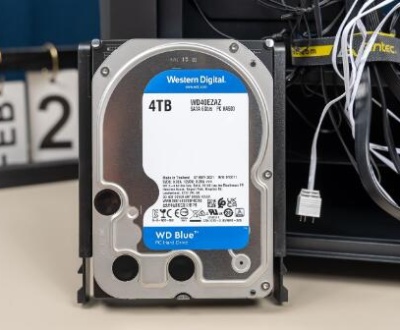A Windows system image is a complete backup of your entire operating system, including applications, system settings, and files.
A Windows system image is a snapshot of your current Windows environment at a specific point in time. This image contains everything that is on your hard drive, including:
Panda Assistant
If you need to recover videos, files, formatting, please download our Panda Assistant. Thank you very much. It can be tried for free and is safe and effective, protecting users’ personal privacy. It is suitable for data recovery on various hardware, USB drives, hard drives, SD cards, etc.
Operating System: Windows installation and system files.
Applications: Installed software and applications.
System Settings: Custom configurations and preferences.
Personal Files: Documents, photos, and other personal data.
Why Create a System Image?
Creating a system image offers several benefits:
Disaster Recovery: If your system fails due to hardware issues, malware, or accidental deletion, you can restore your system to its previous state without losing data.

Time Savings: Instead of reinstalling Windows and all your applications manually, you can restore your system in a fraction of the time.
Consistency: A system image allows you to maintain a consistent working environment, reducing the chances of configuration errors.
Tools for Creating a System Image
1. Windows Built-in Tools
Windows provides built-in utilities for creating a system image. The primary tool is Backup and Restore (Windows 7), which is available in Windows 10 and later versions.
Accessing Backup and Restore:
Go to Control Panel > System and Security > Backup and Restore (Windows 7).
Click on Create a system image in the left panel.
2. Third-Party Software
While Windows has built-in capabilities, third-party software often provides enhanced features and flexibility. Some popular options include:
Acronis True Image: Known for its user-friendly interface and comprehensive backup options, including cloud storage.
Macrium Reflect: Offers a free version with robust disk imaging capabilities and incremental backups.
Panda Assistant: Provides a straightforward approach to backing up and restoring data, with options for disk imaging and file backup.
Steps to Create a System Image
Using Windows Backup and Restore
Open Backup and Restore:
Access it via the Control Panel.
Select Create a system image:
Choose whether to save the image to a hard drive, DVDs, or a network location.
Select Drives to Include:
The system partition will be automatically selected. You can include additional drives if desired.
Set a Schedule (Optional):
You can schedule regular backups if desired.
Start the Backup:
Click Start backup to begin the imaging process.
Create a System Repair Disc (Optional):
After creating the image, you will be prompted to create a system repair disc, which can help in recovery.
Using Third-Party Software (Acronis True Image Example)
Install Acronis True Image:
Download and install the software.
Launch the Application:
Open Acronis True Image.
Select Backup:
Click on Backup and choose Disk and Partition Backup.
Choose Source:
Select the disk you want to back up (usually C: drive).
Select Destination:
Choose where to store the backup (external drive, local drive, or cloud storage).
Start Backup:
Click Back Up Now to begin the imaging process.
Create Bootable Media (Optional):
Use the built-in tool to create a bootable recovery drive for system restoration.
Preparing for Reinstallation
Once you have a system image, it’s essential to prepare for the potential need for reinstallation. This preparation involves creating recovery media and ensuring you have necessary installation files.
Creating Recovery Media
Windows Recovery Drive:
Go to Control Panel > Recovery > Create a recovery drive.
Follow the prompts to create a USB recovery drive.
Third-Party Bootable Media:
Many backup programs allow you to create bootable media for recovery. Make sure to create this before any issues arise.
Reinstallation Process
In the event that you need to restore your system from a system image, follow these steps:
Using Windows Recovery Drive
Boot from Recovery Drive:
Insert the USB recovery drive and restart your computer. Access the BIOS/UEFI settings (usually F2. F10. DEL, or ESC) to boot from the USB.
Select Repair Your Computer:
Choose Troubleshoot > Advanced options > System Image Recovery.
Select Windows Installation:
Choose the correct Windows installation to restore.
Select System Image:
Browse to the location of your system image and select it.
Begin Restoration:
Follow the prompts to start the restoration process. This will overwrite your current system, so ensure you have backups of any critical data.
Using Third-Party Software (Acronis True Image Example)
Boot from Acronis Bootable Media:
Insert the bootable media created earlier and restart your computer.
Select Recover:
Open Acronis True Image and select the option to recover.
Choose Backup Location:
Navigate to the location of your system image.
Select Recovery Type:
Choose to recover the entire disk or specific partitions.
Start Recovery:
Click Recover Now and follow the prompts to complete the restoration.
Post-Reinstallation Steps
After successfully restoring your system, there are several important steps to take:
Update Windows:
Go to Settings > Update & Security and check for updates to ensure your system is secure and up to date.
Reinstall Software:
If you’ve restored an older system image, you may need to reinstall software or update applications.
Restore Personal Files:
If your backup was comprehensive, your personal files should be intact. However, check to ensure everything is as it should be.
Verify System Integrity:
Use tools like sfc /scannow in the Command Prompt to check for and repair any corrupted files.
Best Practices for System Imaging
To ensure a smooth experience with system imaging and restoration, consider the following best practices:
Regular Backups: Schedule regular system images to ensure you always have a recent backup available.
Test Recovery Media: Make sure your recovery media is functional. Boot from it periodically to verify its integrity.
Store Backups Offsite: If possible, keep a copy of your system image offsite or in the cloud for added protection against physical damage.
Document System Changes: Keep a record of any significant changes made to your system, such as software installations or hardware upgrades.
Stay Informed: Regularly check for updates and new features in both Windows and third-party imaging software to maximize your backup strategy.
About us and this blog
Panda Assistant is built on the latest data recovery algorithms, ensuring that no file is too damaged, too lost, or too corrupted to be recovered.
Request a free quote
We believe that data recovery shouldn’t be a daunting task. That’s why we’ve designed Panda Assistant to be as easy to use as it is powerful. With a few clicks, you can initiate a scan, preview recoverable files, and restore your data all within a matter of minutes.
Subscribe to our newsletter!
More from our blog
See all postsRecent Posts
- How to recover deleted voicemail samsung? 2025-04-22
- Samsung portable ssd t5 online recovery 2025-04-22
- Fix western digital external hard drive 2025-04-22

 Try lt Free
Try lt Free Recovery success rate of up to
Recovery success rate of up to









